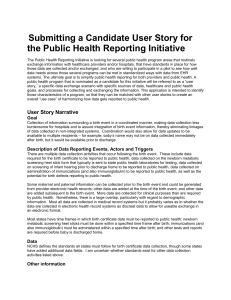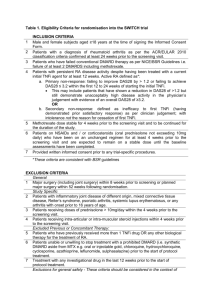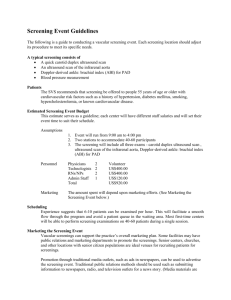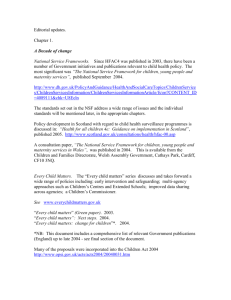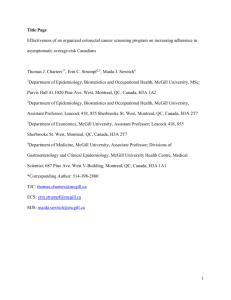assess and manage environmental risks and impacts
advertisement
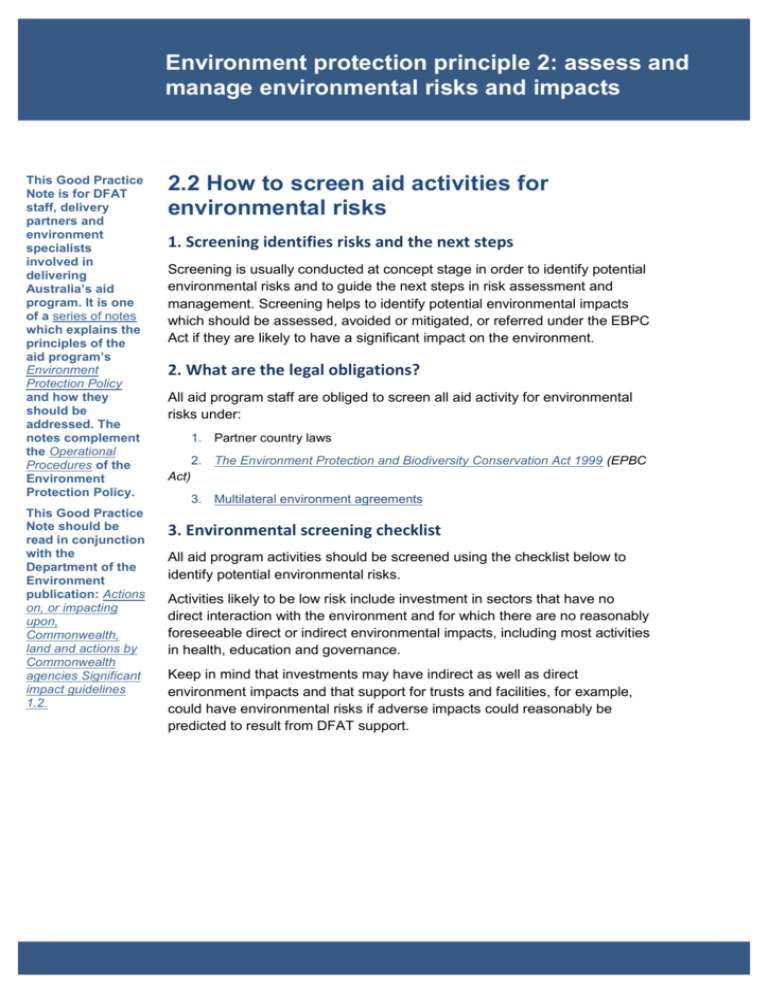
Environment protection principle 2: assess and manage environmental risks and impacts This Good Practice Note is for DFAT staff, delivery partners and environment specialists involved in delivering Australia’s aid program. It is one of a series of notes which explains the principles of the aid program’s Environment Protection Policy and how they should be addressed. The notes complement the Operational Procedures of the Environment Protection Policy. This Good Practice Note should be read in conjunction with the Department of the Environment publication: Actions on, or impacting upon, Commonwealth, land and actions by Commonwealth agencies Significant impact guidelines 1.2. 2.2 How to screen aid activities for environmental risks 1. Screening identifies risks and the next steps Screening is usually conducted at concept stage in order to identify potential environmental risks and to guide the next steps in risk assessment and management. Screening helps to identify potential environmental impacts which should be assessed, avoided or mitigated, or referred under the EBPC Act if they are likely to have a significant impact on the environment. 2. What are the legal obligations? All aid program staff are obliged to screen all aid activity for environmental risks under: 1. Partner country laws 2. The Environment Protection and Biodiversity Conservation Act 1999 (EPBC Act) 3. Multilateral environment agreements 3. Environmental screening checklist All aid program activities should be screened using the checklist below to identify potential environmental risks. Activities likely to be low risk include investment in sectors that have no direct interaction with the environment and for which there are no reasonably foreseeable direct or indirect environmental impacts, including most activities in health, education and governance. Keep in mind that investments may have indirect as well as direct environment impacts and that support for trusts and facilities, for example, could have environmental risks if adverse impacts could reasonably be predicted to result from DFAT support. Environment protection principle 2: assess and manage environmental risks and impacts Table 1: Environment Safeguards screening questions Yes No Not Sure Environment Q3.1 Will the investment support any of the following: medium to large-scale infrastructure such as roads, bridges, railways, ports, infrastructure for energy generation; or development of irrigation and drainage, diversion of water; or land clearing, intensification of land use; or hazardous materials and wastes; or activity in mining, energy, forestry, fisheries, water supply, urban development, transport, tourism or manufacturing sectors? Q3.2 Will the investment support any of the following: small to medium scale infrastructure such as localised water supply and/or sanitation infrastructure; irrigation and drainage; rural electrification, rural roads; or construction/renovation/refurbishment/demolition of any building for example: schools, hospitals or public buildings; or localised use of natural resources, including small-scale water diversion, agriculture, or other types of land-use change? Q3.3 Will the investment contribute to, directly or indirectly, or facilitate, activities such as those listed above, including through: trust funds, procurement facilities; or co-financing contributions; or support for planning, change to regulatory frameworks, technical advice, training or; applied research? Q3.4 Has an environmental review of the proposed investment already been, or will be completed by an implementing partner or donor? Q3.5. Does this investment need to meet any national environmental standards or requirements? How to screen aid activities for environmental risks | 2 Environment protection principle 2: assess and manage environmental risks and impacts 4. Environmental risk categorisation Where environmental screening indicates the potential for environmental risk (i.e. the answer to a screening question is yes or unsure), the likelihood of the activity having a significant impact on the environment should be assessed. Risk categorisation involves making a determination of the expected impacts of an activity on the environment. The risk categories and descriptions in Table 2 may assist. Table 2. Environmental risk categories Risk category Description of risks Low Activity is considered to have minimal or no adverse impact (direct or indirect) on the environment – unlikely to have a significant impact on the environment. No further action required apart from ongoing monitoring. Medium Activity might have a significant impact on the environment (direct or indirect), particularly in the absence of mitigation measures. Impacts are typically local and short-term and are not in environmentally sensitive areas. Activities where impacts are uncertain are likely to fit into this category. High Activity is likely to have a significant impact on the environment (direct or indirect), even if mitigation measures are successfully implemented. Impacts typically affect a large or sensitive geographic area or have permanent and long-lasting effects. Referral to the Environment Minister is required if the activity is not able to be modified to avoid significant impact on the environment. For guidance on how to determine a ‘significant impact’ see the Department of Environment’s Significant impact guidelines 1.2 - Actions on, or impacting upon, Commonwealth land and Actions by Commonwealth Agencies 2013 (“Significant impact guidelines). See also Good Practice note 2.3 How to assess significant impacts and environmental risks resulting from an aid activity. How to screen aid activities for environmental risks | 3 Environment protection principle 2: assess and manage environmental risks and impacts 5. Next steps The next steps after screening are mapped out in the following flow chart: Screening Low risk No further action except normal risk monitoring and due diligence Medium or high risk Must assess environmental risks and plan to avoid, manage and monitor medium to high If significant risk is still likely Must get help regarding referral and possible further assessment If your activity is medium to high risk, you must arrange for an assessment of environmental risks, and engage the expertise needed to conduct it. This assessment would usually be done during design and be accompanied by an environmental management plan to avoid risks, and to reduce, manage, monitor and report on unavoidable risks. If at the end of this process, a significant environmental impact is still considered likely, the activity must be referred to the Minister for the Environment for advice. The Environmental Safeguards Section will guide you through this process. 6. You are following good practice if you: Answer the screening questions early in investment concept development Categorise to risks to the environment, informed by the Significant Impact guidelines, before a concept is approved Follow the instructions for what to do next if your aid activity has a medium to high risk of causing a significant environmental impact. Get help if you are unsure Contact the Environment Safeguards Section: environment@dfat.gov.au How to screen aid activities for environmental risks | 4






